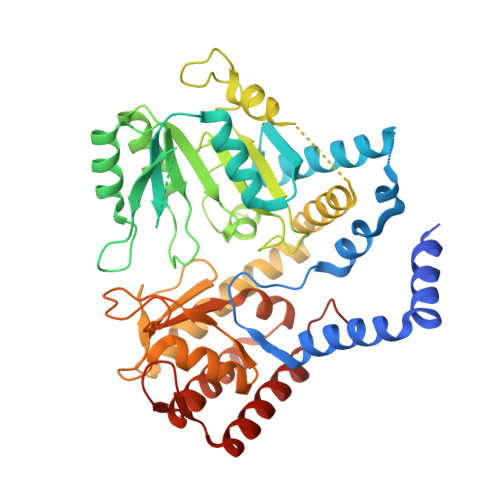Genome Mining Enabled by Biosynthetic Characterization Uncovers a Class of Benzoxazolinate-Containing Natural Products in Diverse Bacteria.
Shi, Y.M., Crames, J.J., Czech, L., Bozhuyuk, K.A.J., Shi, Y.N., Hirschmann, M., Lamberth, S., Claus, P., Paczia, N., Ruckert, C., Kalinowski, J., Bange, G., Bode, H.B.(2022) Angew Chem Int Ed Engl 61: e202206106-e202206106
- PubMed: 36198080
- DOI: https://doi.org/10.1002/anie.202206106
- Primary Citation of Related Structures:
7QCW - PubMed Abstract:
Benzoxazolinate is a rare bis-heterocyclic moiety that interacts with proteins and DNA and confers extraordinary bioactivities on natural products, such as C-1027. However, the biosynthetic gene responsible for the key cyclization step of benzoxazolinate remains unclear. Herein, we show a putative acyl AMP-ligase responsible for the last cyclization step. We used the enzyme as a probe for genome mining and discovered that the orphan benzobactin gene cluster in entomopathogenic bacteria prevails across Proteobacteria and Firmicutes. It turns out that Pseudomonas chlororaphis produces various benzobactins, whose biosynthesis is highlighted by a synergistic effect of two unclustered genes encoding enzymes on boosting benzobactin production; the formation of non-proteinogenic 2-hydroxymethylserine by a serine hydroxymethyltransferase; and the types I and II NRPS architecture for structural diversity. Our findings reveal the biosynthetic potential of a widespread benzobactin gene cluster.
Organizational Affiliation:
Department of Natural Products in Organismic Interactions, Max Planck Institute for Terrestrial Microbiology, 35043, Marburg, Germany.














